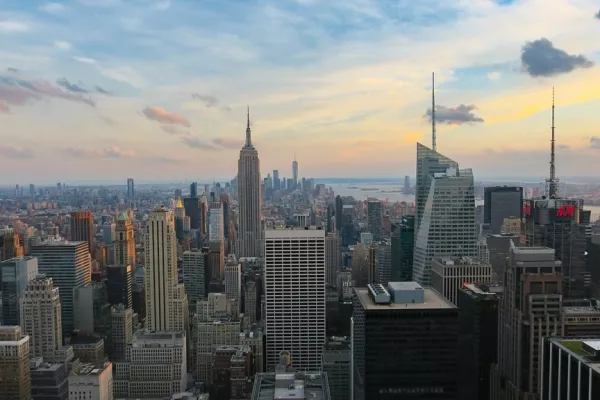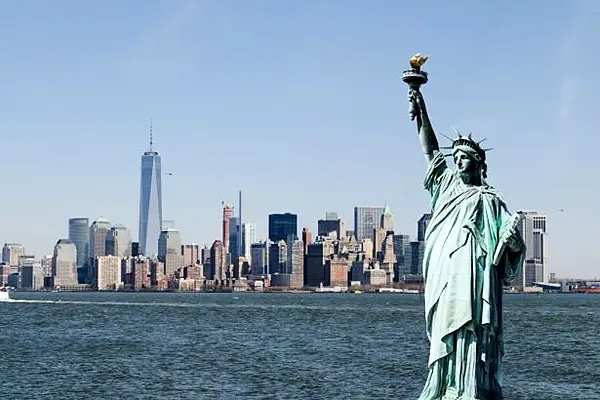The new owner of Manhattan’s Waldorf Astoria said it will work with New York City officials to maintain the hotel interior’s distinctive Art Deco details after preservationists raised concerns that a condominium conversion may threaten them.
Anbang Insurance Group Co., a Chinese insurance company that last year bought the hotel for $1.95 billion, disputed assertions by the New York Landmarks Conservancy preservation group that it had refused to support landmark protection for the hotel’s interiors during a meeting of representatives of both organizations.
“Anbang has never said it is opposed to landmark designation,” spokesman Jeremy Soffin said in an e-mail. “We are committed to working cooperatively and collaboratively with the Landmarks Preservation Commission to achieve an outcome that respects and reinvigorates the Waldorf Astoria for the next 100 years.” The commission is the city agency responsible for protecting architecturally, culturally and historically significant buildings.
Anbang become one of the world’s most prominent real estate buyers with its acquisition of the 1,413-room Waldorf Astoria, paying the highest price ever for a single existing hotel in the U.S. The Park Avenue property is scheduled to close in the spring for a multiyear retrofit that will probably see most of its rooms converted to luxury condos, according to a person with knowledge of the plans.
Conservationists’ Concerns
The plans sparked concern among the city’s preservationist groups. The Art Deco Society of New York posted a notice on its website headlined “Deco in Danger,” warning that the hotel “would be gutted and turned into condos.” The group invites readers to fill out a form to go directly to Meenakshi Srinivasan, chairwoman of the New York City Landmarks Commission, to demand that the panel quickly designate the areas for protection. The hotel’s exterior is already designated a landmark, while its interiors aren’t.
The Landmarks Conservancy and the Historic Districts Council also joined the fight. The conservancy wants to protect the hotel’s famed Peacock Alley, a Louis Rigal mosaic in the foyer, the grand ballroom where Guy Lombardo’s band used to play each New Year’s Eve and the 18th floor Starlight Roof where guests once danced under the stars.
The hotel’s interiors “are currently under review by the agency,” said Damaris Olivo, a spokeswoman for the commission. Because the exterior is landmarked, Anbang and its representatives are required to submit their plan to the commission because the alterations are expected to be significant and could affect the outside of the hotel. The city Department of Buildings would also have to sign off on any plan.
Commission Urged
The conservancy sent an e-mail earlier this month to its members urging them to demand the commission act to save the interiors. The group said in the e-mail that it met with three Anbang executives, and while “they appreciate the historic character of the building and they know how much the hotel means to New Yorkers,” they “oppose any interior landmark designation.”
Told of Anbang’s latest statement, Landmarks Conservancy President Peg Breen said that “their representatives were very clear when they were speaking to us that they did not want any interior landmark designation. If they changed their minds now, that’s very good news.”
Meghan Weatherby, the Art Deco Society’s director of operations, called the Anbang statement “a great step in the right direction. It’s a great movement forward in showing that they are interested in protecting the Art Deco heritage.”
Protection Pushed
Both Breen and Weatherby said they would continue to push for the city to protect the interiors, so that any changes to them would require municipal approval.
Completed in October 1931, the 625-foot (191-meter) building was a pioneer in adapting the skyscraper form to hotel use, according to its 1993 landmark designation. The hotel welcomed every president since Herbert Hoover, who broadcast a welcoming message from the White House that was amplified throughout the building. The State Department, after decades of using the hotel as a home base for U.S. diplomats during the United Nations General Assembly, last year shifted its operations to the nearby New York Palace Hotel following the Waldorf’s acquisition by Anbang.
The hotel’s Peacock Alley is the recreation of the key feature of the original Waldorf Astoria, which was demolished to make room for the Empire State Building. The passageway between the hotel’s Park Avenue entrance and its main lobby is paneled with French burled walnut and leads to what’s been called the lobby’s most iconic feature, a clock built for the 1893 World’s Columbian Exposition in Chicago.









